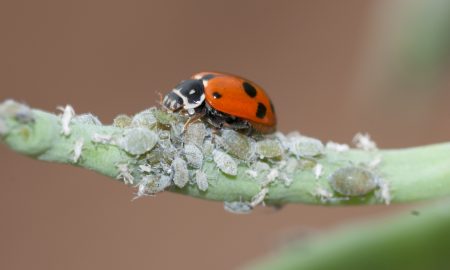The drop in temperatures in the last 10 days of April has made mass hatchings extremely likely in many eastern areas.
Where have they been reported?
Increasingly cooler and wetter climatic conditions throughout April mean that redlegged earth mite (RLEM) egg hatch is now happening right across south-eastern Australia. According to climate-driven models, egg hatch for RLEM is predicted to have occurred in mid to late April in many of the cooler regional areas of south-eastern Australia that received rainfall in early April.
University of Melbourne researcher, Josh Douglas, has been collecting mite samples in North East Victoria and the NSW Riverina. After inspecting samples in the laboratory for microscopic mite larvae, Josh has found that redlegged earth mites in the Albury and the Lowesdale areas began hatching from the 25th of April and the 4th May, respectively.
Predictions of egg hatch
The hatch of redlegged earth mite (Halotydeus destructor) eggs is highly tuned to environmental conditions. Their evolved strategy to survive between seasons is complex and clever. Their challenge is to ‘heat proof’ the eggs over summer (diapause) as they sit exposed on the soil surface, and with the onset of autumn, to resist hatching until their food sources (annual plants) have germinated with a reasonable probability of survival and establishment. To achieve this they employ two triggers: a minimum rainfall and a minimum temperature requirement. This relationship has been modelled to provide guidance on egg hatch trends.
How does the model work?
Recent research by Garry McDonald suggests that the process of egg development in autumn requires at least 5 mm of rain accumulated over five consecutive days or less, followed by 10 days of average† daily temperatures remaining below 16°C. This minimises the risk that mite eggs will hatch (and perish) in early autumn following a false break. The research also suggests that these thresholds may differ in Western Australia. Comparable research on blue oat mites has not been completed.
We have run the prediction model for redlegged earth egg hatch for key cropping regions. The model predicts the date of peak egg hatch; damaging infestations will become visibly apparent about a week later.
• Early April (late stage nymphs and a few adults should now be active) – Ballarat region of Victoria
• Mid April (mid to late stage nymphs should now be active) – NSW Central and Southern tablelands; Victoria: East Gippsland and South West Victoria
• Late April (early stage nymphs should now start to become evident) – NSW: Central West Slopes & Plains, South West Slopes, Victoria: Eastern Wimmera, Northern Country, South and West Gippsland
• Too early to forecast: NSW: Riverina, Central West Slopes and Plains; Victoria: west Wimmera, Mallee, southern areas of the North East, and eastern parts of the Northern Country
With the onset of cooler weather and some rain in many districts from Tuesday 5th May, RLEM eggs may well complete development this week.
† The concept of the average day temperature was devised by CSIRO Entomologist, Dr Murray Wallace, in the 1970’s. He calculated a ‘mean’ day temperature where the daily maximum is weighted over the daily minimum.
Our advice
Growers are encouraged to check seedling crops as they emerge, being aware that damage can be patchy. Redlegged earth mites attack a wide variety of plant types including cereals, oilseeds and pastures. They feed by piercing plant cells and sucking out the contents, which results in silver or white patches. High mite populations can kill plants at emergence, when crops are most vulnerable to attack, even when seed treatments have been applied. The timing of post-emergence sprays can be critical (see below).
Control options
Before deciding on the most appropriate control measure, ensure the correct mite species has been identified.
Autumn insecticide sprays for redlegged earth mites should ideally target mites 2-3 weeks after their emergence. This provides time for the majority of diapause eggs to hatch, but should be before the second-generation eggs have been laid. Economic thresholds should be used when making spray decisions.
Acknowledgements
Sources of field reports of redlegged earth mite
Josh Douglas – Researcher, The University of Melbourne
Cover image: Photo by Andrew Weeks, Cesar Australia





